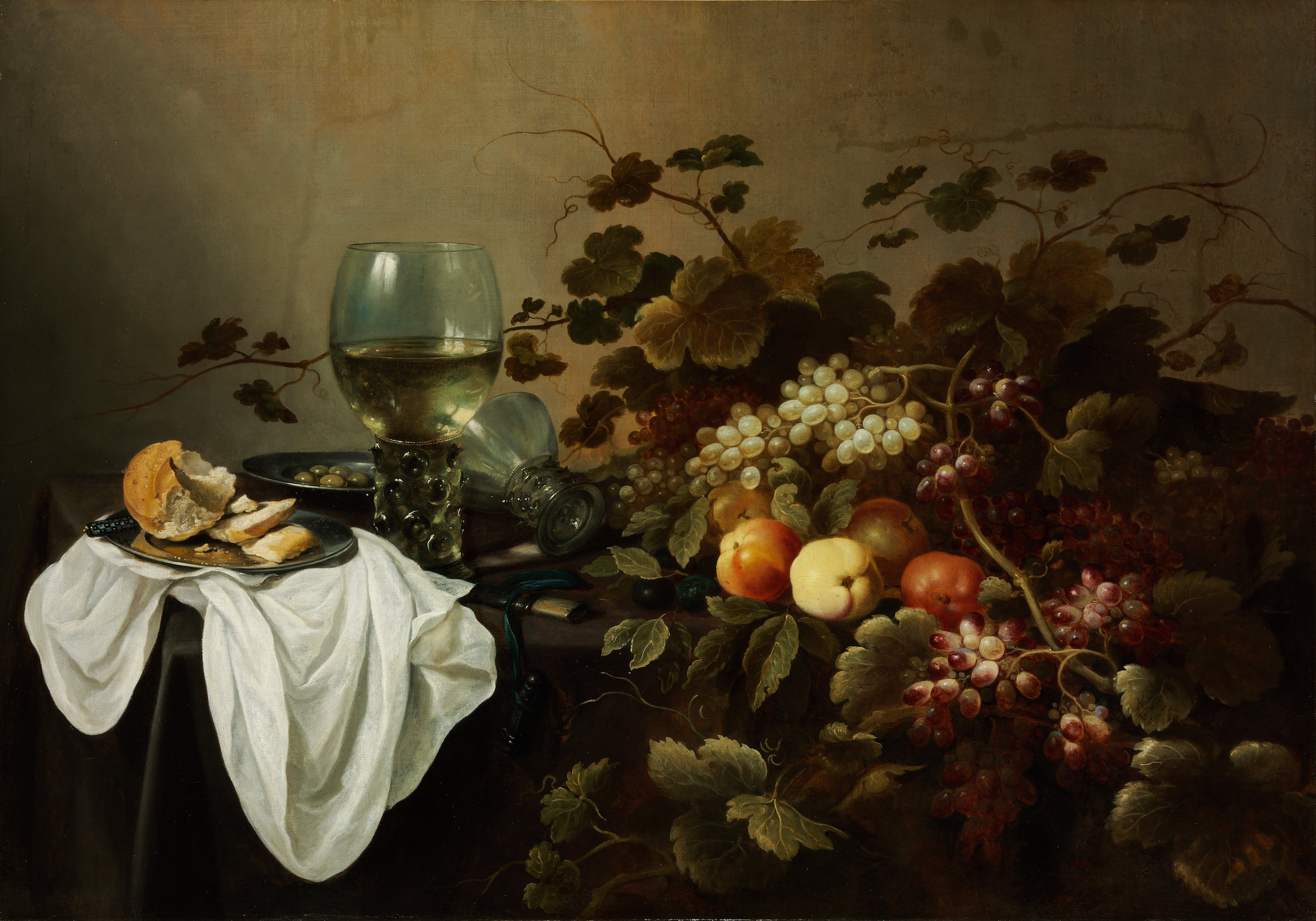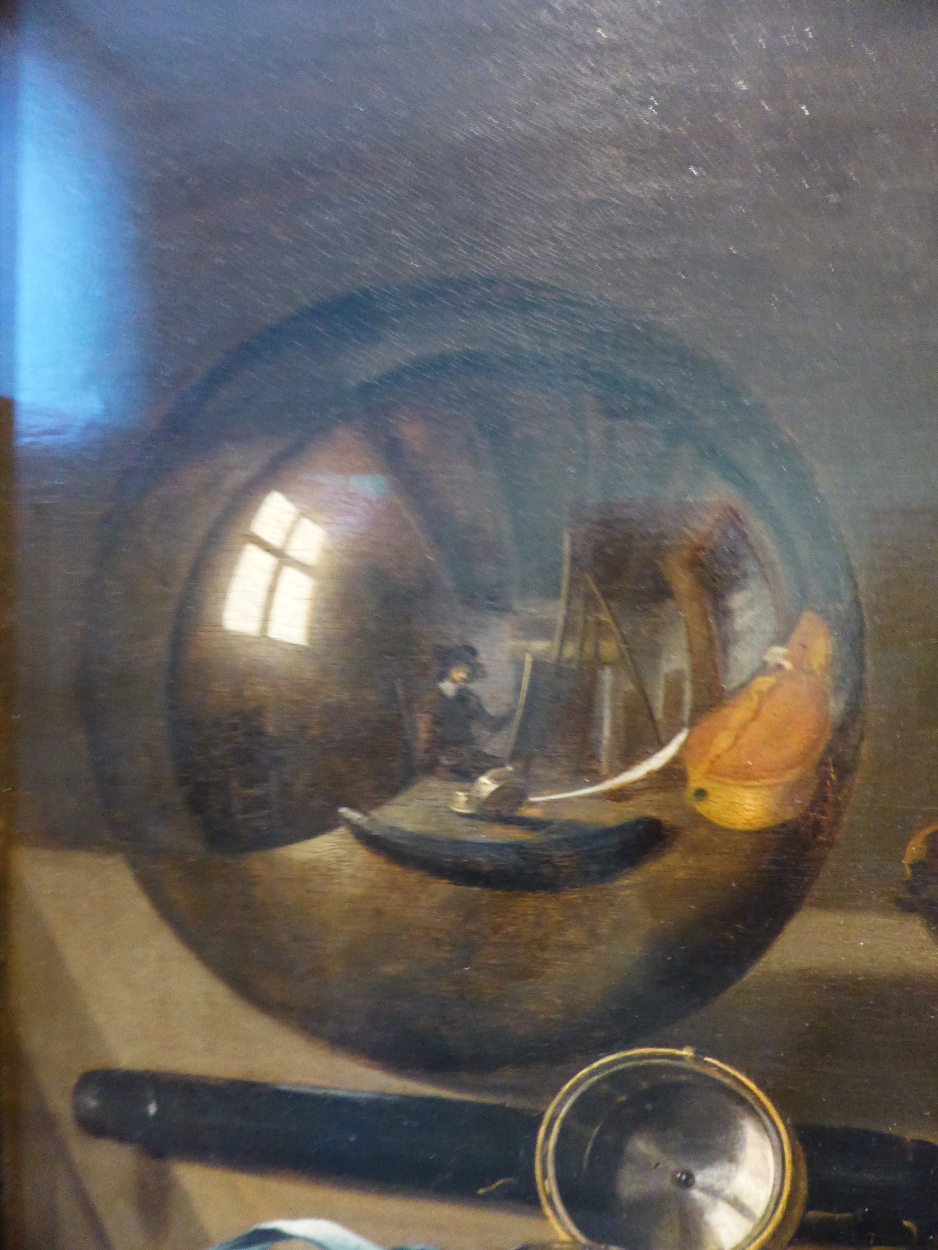Recent scholarship has established that Pieter Claesz, the par excellence Dutch painter, actually came to Haarlem from the southern provinces. The Antwerp effect can indeed be traced in his early works, but by the end of the 1620s, by applying in still lifes the tonal painting technique widespread among Dutch landscape-painters, he had developed his own idiosyncratic style. His paintings thus convey puritanical Protestant taste, in striking contrast to the colourful and decorative still lifes of the Flemish masters. What became known as "monochromatic" tabletop still life was very popular, and Pieter Claesz soon had many followers and imitators, i.e., originated a school. The secret of his effects was a composition of few elements, objects viewed in realistic close-up, concentrating on portraying materials with almost tangible naturalism. However, the attractive array of fine objects and comestibles, through an apparently random juxtaposition of motifs, sets us thinking, and as we linger on the details, we are drawn into the artist's intimate world.
This unusually large-size still life, enriched with decorative elements and painted with an associate, is a special piece of his oeuvre. It was not uncommon for Netherlandish masters, who produced for the market, to specialise in certain tasks and therefore to work together on a particular painting. What was rare, however, was for different objects of a still life to be inserted into a coherent composition by different hands. Since this is the only surviving example of Pieter Claesz's work where both his own monogram and the signature of another artist, together with the date, are clearly legible, it provides significant evidence of their cooperation. The stronger, more pronounced part, with the enormous Roemer cup and the fallen Berkemeyer beside it, and the pieces of bread on the metal plate and white tablecloth with dense folds, are the work of Pieter Claesz, and the splendid items of fruit occupying the larger picture field are by Roelof Koets. Nevertheless, the highly modelled left side and the softer but more colourful and busily decorative right side combine into a fully coherent whole. Set against a brownish olive-green ground tone, the sharp illumination highlights the white cloth and the bread, the wine flashing gold in the glass with its reflection of the window, the apples and the swelling bunch of grapes.
The content of the two sides is also mutually complementary. The highlighted wine and bread, symbols of the Eucharist, allude to blood and the body of Christ. The apple would suggest to contemporary viewers the Fall, and the grapes are another Christ symbol: as the body of the Messiah was broken, so grapes are broken to make a noble drink. Allegories of the Fall and Redemption may seem to us somewhat exaggerated in a still life of such sensuous beauty, but in Protestant Holland, natural phenomena and everyday objects had the function of transmitting religious thoughts. And perhaps the hidden pious message provided a kind of excuse for the artist to paint, and for puritan citizens to enjoy, the pleasures and beauties of life in sumptuous abundance.


 Pieter Claesz
Pieter Claesz